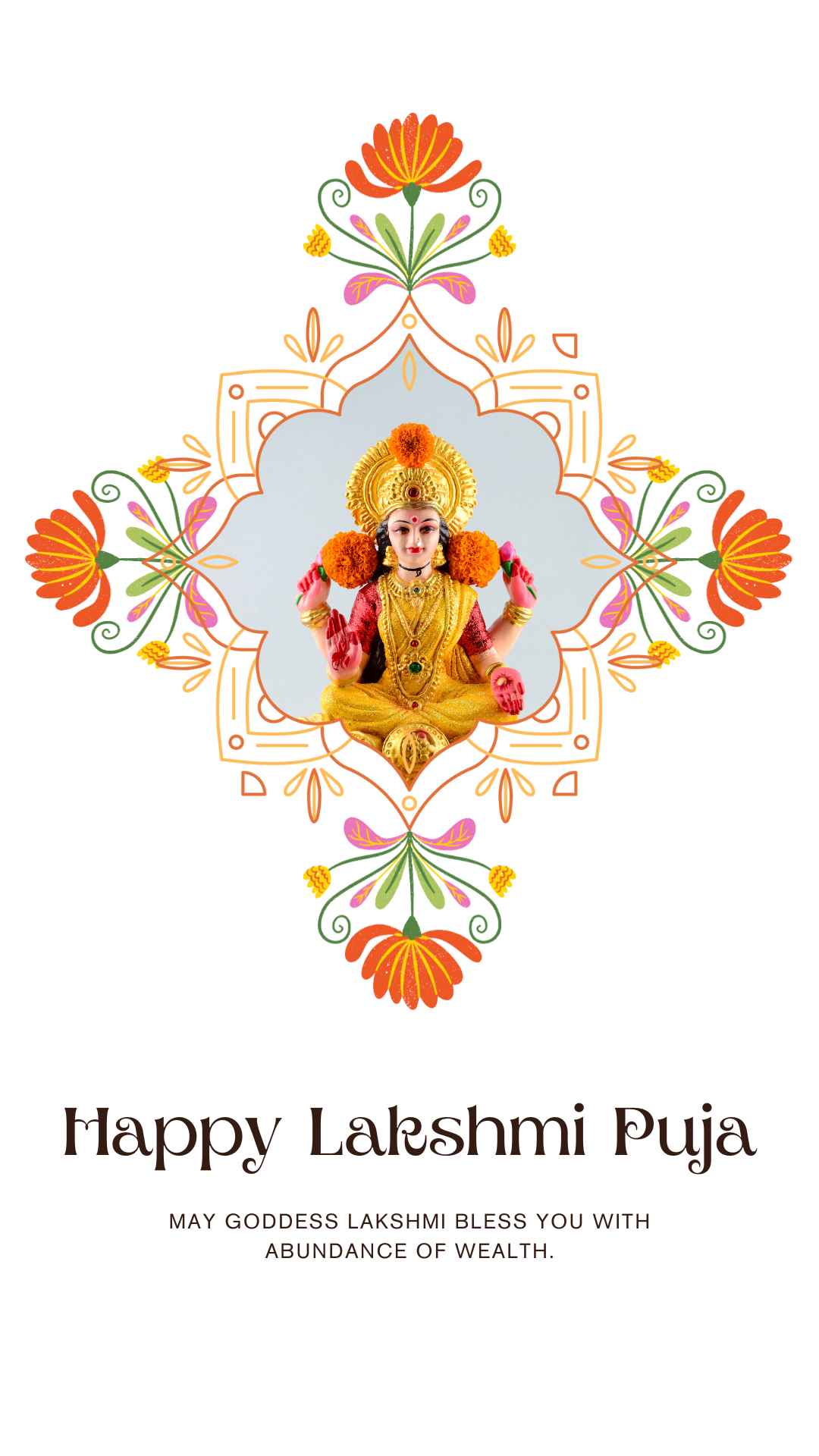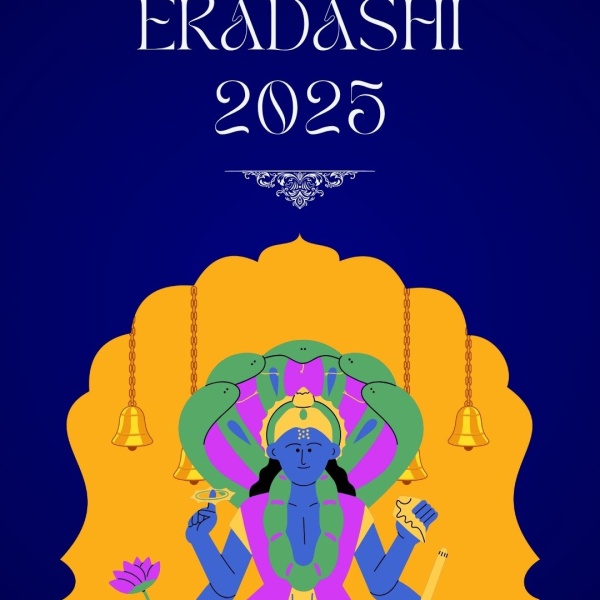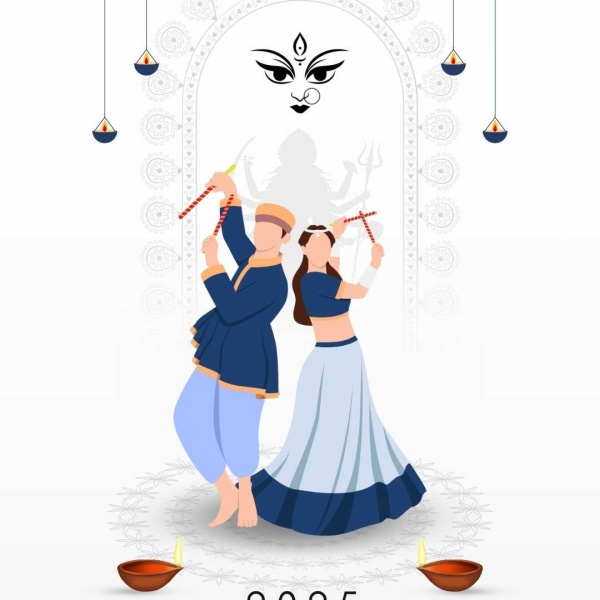Kojagari Lakshmi Puja 2025 will be celebrated on October 6th, 2025. It coincides with Sharad Purnima—the full moon night of the Ashwin month. This auspicious festival combines the spiritual essence of an overnight vigil (jagaran) and elaborate wealth rituals. These rituals honor Goddess Lakshmi, the divine embodiment of prosperity, fortune, and abundance.
Read about – Mahalaya Amavasya 2025: Pitru Tarpan & Shraddha Rituals
Significance of Kojagari Lakshmi Puja
Kojagari Lakshmi Puja is deeply rooted in the belief that on this night, Goddess Lakshmi descends to Earth. She blesses households that remain awake and pure with wealth and good fortune. The festival is also known as Kaumudi Vrat or Bengali Lakshmi Puja in different regions. Central to all is the devotion to the goddess through fasting, prayers, and a night-long vigil to attract prosperity. The moonlight of Sharad Purnima is believed to hold amrit-like healing power, adding spiritual importance to rituals performed under it.
Devotees observe Kojagari Puja not just to seek material wealth but also spiritual growth. They also wish for prosperity in health, family harmony, and protection from financial hardships.
Read about – Masik Shivratri October 2025: Puja Vidhi & Night Fasting
The Eight Forms of Lakshmi
Goddess Lakshmi manifests in eight distinct forms during Kojagari Puja, and devotees meditate on these forms to receive her blessings:
- Dhanalakshmi (Wealth)
- Dhanyalakshmi (Grain and Food)
- Garadalakshmi (Protector)
- Santanalakshmi (Progeny)
- Vijayalakshmi (Victory)
- Vidyalakshmi (Knowledge)
- Aiswaryalakshmi (Prosperity)
- Rajyalakshmi (Royalty and Power)
Each form represents a vital aspect of wealth and prosperity, making the puja a holistic invocation. It focuses on abundance in all life domains.
Read about – Skanda Sashti 2025: Murugan Puja Vidhi & Significance
Rituals and Practices of Kojagari Puja
The festival’s hallmark is the overnight vigil, where devotees stay awake to welcome Goddess Lakshmi. The ritual schedule includes:
- Lakshmi Puja: At Nishita Kaal (around midnight), devotees perform puja. They offer kheer (milk-rice pudding), puffed rice, sugarcane, lotus flowers, coins, and betel leaves. They do this while chanting mantras like Lakshmi Ashtottara Namavali and Sri Suktam.
- Kheer under Moonlight: A special kheer is prepared and placed under the moonlight to absorb the rejuvenating Sharad Purnima energy. Consuming this kheer the next day is believed to purify the body and soul.
- Jagaran: The night-long vigil is filled with chanting Lakshmi Sahasranama and reciting Lakshmi Purana stories. Family bhajans and silent prayers are also part of the devotion, all inviting the goddess’s blessings.
Connection with Sharad Purnima, Karwa Chauth, and Lakshmi Puja
Kojagari Lakshmi Puja is celebrated on Sharad Purnima, which marks the end of the monsoon. The kheer offering reflects the lunar nourishment believed to fall from the moon on this night.
This festival connects spiritually with Karwa Chauth, celebrated just days before. It similarly involves fasting and night vigils for family members’ well-being, but focuses on marital longevity and prosperity.
Lakshmi Puja during Diwali also centers on wealth worship. However, it involves elaborate rituals over multiple days, whereas Kojagari Puja is more concentrated on the full moon night vigil honoring the goddess’s visit under moonlight.
Read about – Valmiki Jayanti 2025: Life & Teachings of Maharishi Valmiki
Modern Relevance and Observances
Kojagari Lakshmi Puja combines vibrant cultural traditions with spiritual introspection. In contemporary times, it continues to guide millions in seeking abundance, not just materially but in wisdom and family harmony.
Many households now complement traditional puja with charitable acts and environmental awareness. They use eco-friendly decorations and join in collective community vigils to promote shared prosperity.
Kojagari Lakshmi Puja 2025 offers a profound opportunity. It engages people with divine abundance through devotional austerity and night-long presence. As devotees wait for the goddess under the moonlit sky, they weave together prayer, purification, and hope. This creates a luminous tapestry of faith and prosperity.
For those interested, exploring related festivals such as Sharad Purnima, Karwa Chauth, and the grand Lakshmi Puja during Diwali provides further context. It illuminates the enduring role of Goddess Lakshmi in Indian spirituality and cultural life.
Regional Variations and Customs
West Bengal and Odisha:
In Bengal and Odisha, Kojagari Lakshmi Puja is an important household festival. Families draw simple rice-paste designs, called alpana or rangoli, at their doors and puja areas to welcome the goddess. Neighbors come together for community worship and devotional songs.
Maharashtra:
Known as Kojagiri Purnima, the festival holds great significance centered on the full moon night. People prepare and consume “Masala Doodh” (spiced milk) under the moonlight, believed to absorb healing lunar energies. Families often gather for night-long celebrations, marked by prayers and storytelling, invoking prosperity. The communal aspect of enjoying moonlit festivities creates a soothing, uplifting environment.
Bihar and Eastern Uttar Pradesh:
In these regions, detailed pujas mark the festival. Women observe fasts for their family’s well-being. The fast-breaking ceremony reinforces community ties through shared sacred meals.
Karnataka and Andhra Pradesh:
Here, the festival is linked with Pournami Puja, especially among Vaishnavite communities. Devotees fast, stay awake at night in prayer, and prepare milk-based sweets like kheer as part of their worship.
Northeast India:
In parts of Assam and neighboring states, Kojagari coincides with Lokkhi Puja. Devotees don festive attire and prepare offerings comprising sweets, lentils, and fruits. Maintaining cleanliness, drawing rangoli, and communal singing amplify the festive spirit.
Common Themes Across Regions
Preparations like placing kheer or milk outside under the moon to absorb its healing rays are recurrent. This symbolizes nourishment and divine grace.
- Communal Harmony: Sharing prasad, organizing collective pujas, and family gatherings underscore social cohesion, spreading joy and reinforcing cultural identity.
- Household and Spiritual Purity: Every region emphasizes cleaning homes and decorating with flowers and lamps. This fosters an ambience of sanctity inviting Goddess Lakshmi’s blessings.
Pachhar Prasad and Festive Foods
Central to Kojagari Puja are special foods that reflect local tastes and symbolic meaning:
- In Bengal, sweets like sandesh, rasgulla.
- Spiced milk “Masala Doodh” is a staple in Maharashtra.
- Seasonal fruits, sugarcane, betel leaves, and coconut often accompany offerings.
Social and Cultural Significance
Beyond spirituality, Kojagari Lakshmi Puja promotes:
- A sense of community through shared rituals and public celebrations.
- Preservation of ancient traditions in contemporary society.
- Emphasis on sustainability through the use of natural materials, eco-friendly decorations, and ritual purity.
- Intergenerational learning, with elders teaching children about rituals, mantras, and the stories behind the festival.
Read about – Chhath Puja 2025 : Surya Arghya & Rituals


